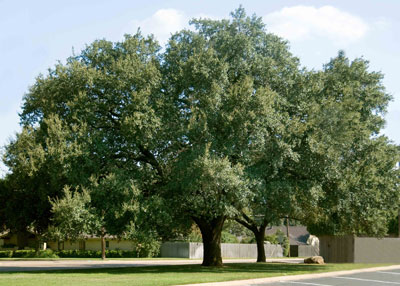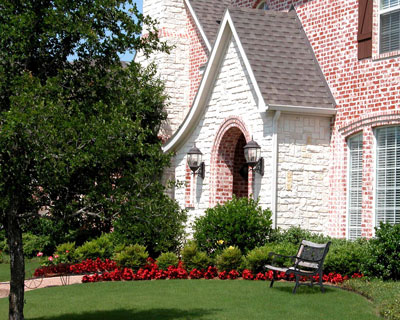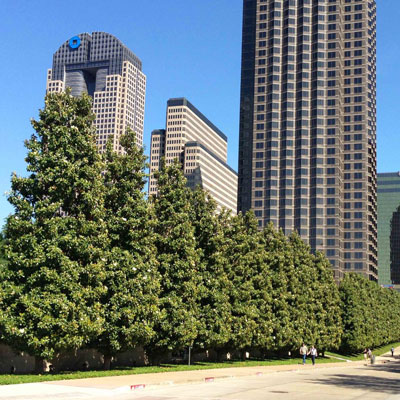Best of the Large Shade Trees
I’m asked many times every week to recommend what I think is the very best large shade tree. My answer depends on location in Texas, depth of soil, other trees already in the landscape and other factors, but my go-to plants for almost all of our state would be this list that I prepared a while back for my Facebook community.

Live oak: Grows to be 40 ft. tall and 60 to 70 ft wide, so plant accordingly. Certainly not a good choice near streets or in small city lots. Evergreen and suited to a variety of soils and climates.

Shumard red oak: Grows to 50 to 60 ft. tall and wide. Native to North Central and Central Texas. Adapted everywhere. Deep green all season, then various shades of red, burgundy, orange and yellow most falls.
Chinquapin oak: Grows to 60 ft. tall and 50 ft. wide. Native to North Central Texas but adapted to all of the state. Attractive dark green leaves and gray, platy bark. No special fall color.

Bur oak: Grows to 60 ft. tall and wide. Huge leaves and acorns. Dark green all summer. No special fall color. Bark is extremely fissured. Bold and coarse-textured look in landscape. Well suited to entire state.

Pecan: Grows to 70 ft. tall and wide. Check with local experts to determine best varieties for your area if nut production is important to you. Pecans can be a bit messy with their flower and fruit litter so plant accordingly. Needs deep soil.

Cedar elm: Grows to 50 ft. tall and 40 ft. wide. Native to North Central Texas but adapted to almost all of the state. It is by far the best elm for our landscapes. Deep green summer color. Fine textured. Subject to powdery mildew and mistletoe.

Chinese pistachio: Grows to 50 ft. tall and wide. Female trees bear fruit that can generate unwanted seedlings. Male trees do not. Hopefully someday we will have access to fruitless male selections. Outstanding fall color.

Southern magnolia: Grows to 60 ft. tall and 50 ft. wide (bigger in deep soils of East Texas). Best suited near and east of I-35 due to need for deep, iron-rich soils. Handsome large evergreen foliage with large white flowers in spring and sporadically in summer. Compact forms such as Little Gem and Teddy Bear and bronze-leafed types such as D.D. Blanchard are available.

Eastern redcedar juniper: Grows to 45 ft. tall and 35 or 40 ft. wide. Pyramidal evergreen that is well suited to almost all soils and almost all of the state. Native to eastern half of Texas. A much better evergreen than the very similar (and disease-prone) Leyland cypress.
This is a list I’ve constructed many times over my career. I promise you I’m not forgetting any of my own A-plus candidates. This doesn’t mean that these are the only large shade trees you ought to consider. These are just the only ones I would rank at this high level of proven performance, at least from my own experience.
